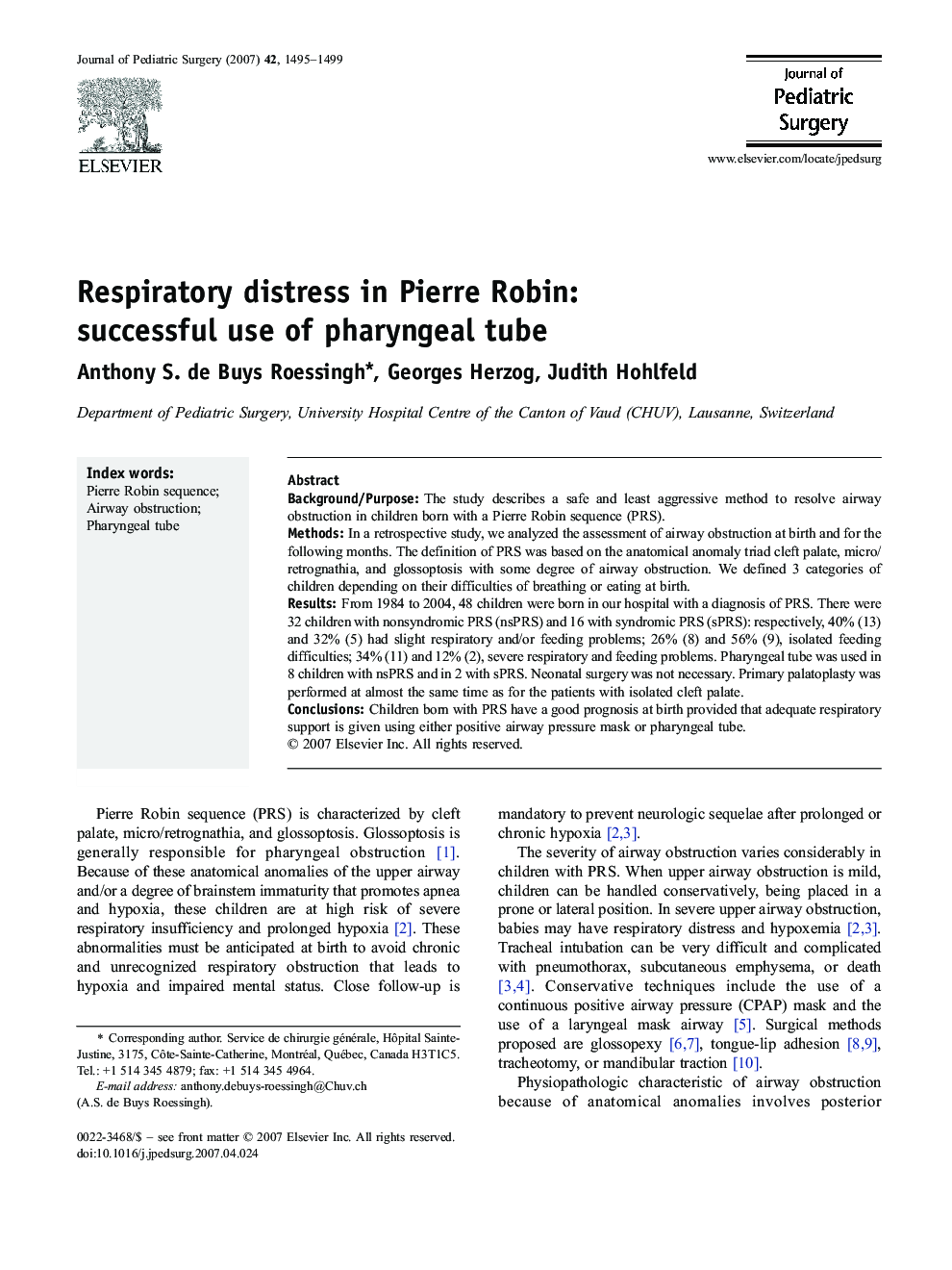| Article ID | Journal | Published Year | Pages | File Type |
|---|---|---|---|---|
| 4159651 | Journal of Pediatric Surgery | 2007 | 5 Pages |
Background/PurposeThe study describes a safe and least aggressive method to resolve airway obstruction in children born with a Pierre Robin sequence (PRS).MethodsIn a retrospective study, we analyzed the assessment of airway obstruction at birth and for the following months. The definition of PRS was based on the anatomical anomaly triad cleft palate, micro/retrognathia, and glossoptosis with some degree of airway obstruction. We defined 3 categories of children depending on their difficulties of breathing or eating at birth.ResultsFrom 1984 to 2004, 48 children were born in our hospital with a diagnosis of PRS. There were 32 children with nonsyndromic PRS (nsPRS) and 16 with syndromic PRS (sPRS): respectively, 40% (13) and 32% (5) had slight respiratory and/or feeding problems; 26% (8) and 56% (9), isolated feeding difficulties; 34% (11) and 12% (2), severe respiratory and feeding problems. Pharyngeal tube was used in 8 children with nsPRS and in 2 with sPRS. Neonatal surgery was not necessary. Primary palatoplasty was performed at almost the same time as for the patients with isolated cleft palate.ConclusionsChildren born with PRS have a good prognosis at birth provided that adequate respiratory support is given using either positive airway pressure mask or pharyngeal tube.
